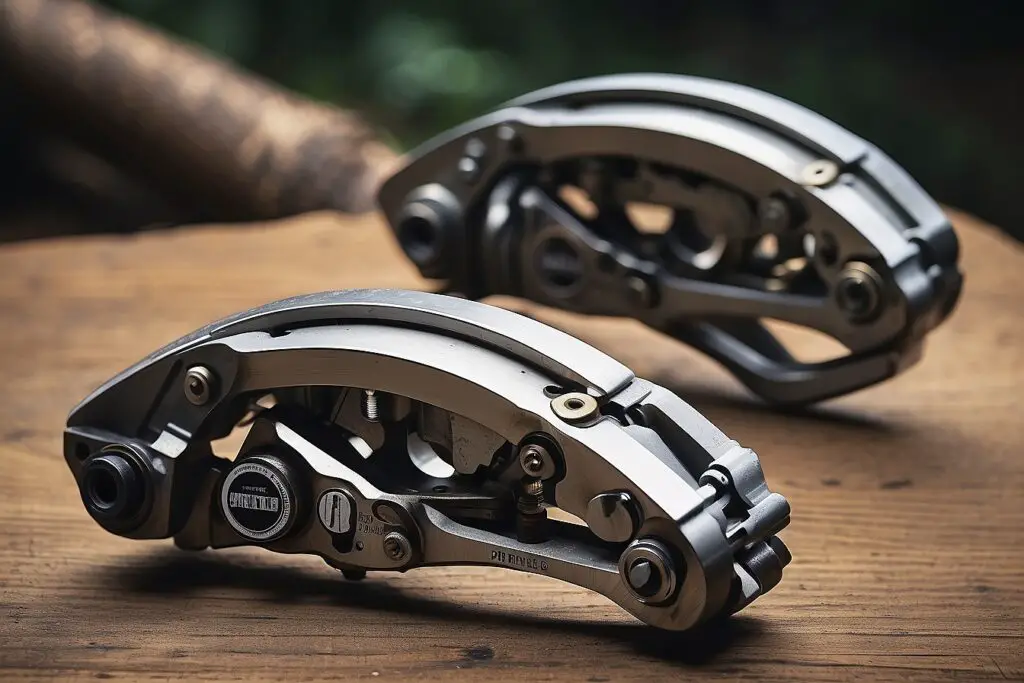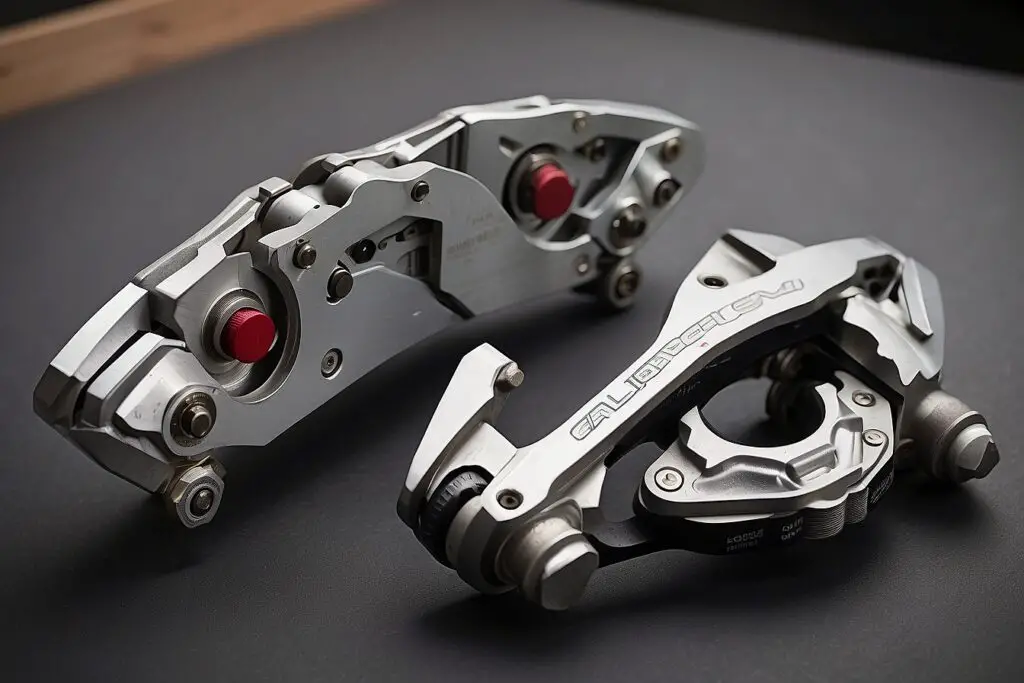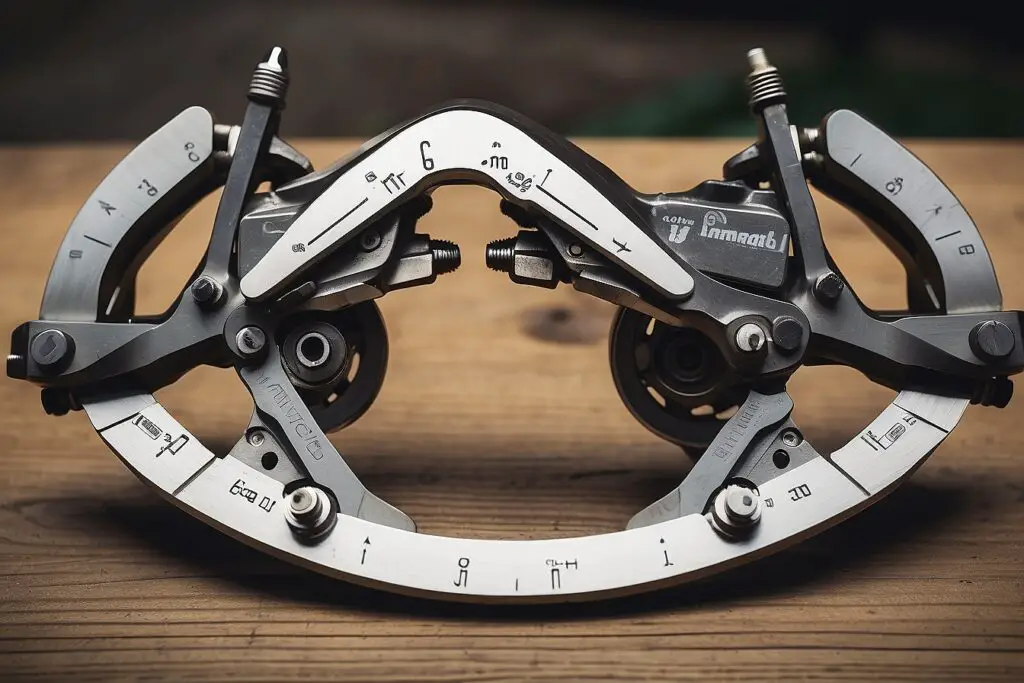Fixed Calipers VS Floating Calipers: Understanding The Differences
The basic concept of brakes is simple enough: use friction to slow or stop a car. But the reality is that part of braking properly involves more than having a good set of pads, a rotor, and a caliper. Depending on your goals, you’ll need to consider which type of caliper works better for you—floating or fixed. Floating calipers feature pistons on either side of the rotor that move independently from one another. This allows the pad surface area contact with the rotor to be more evenly distributed, leading to improved stopping power.
On the other hand, fixed calipers are mounted in place by a bracket so they won’t shift when under pressure. The benefit offers extra rigidity and reduced pad Flex-Hot Spotting resulting in reduced friction and heat buildup over time and less expensive manufacture cost. Each type has its own strengths and weaknesses, so it’s important to factor in how you’ll use your vehicle when deciding which type fits best for your needs.
Table of Contents
About Fixed Caliper
The fixed caliper is a commonly used brake system employed in automotive vehicles. It is characterized by pistons on both sides of the vehicle and operates simply by applying the brakes. When the brakes are pressed, these pistons push against the rotor, resulting in the force being applied to the brakes. With this application of force, both brake pads will forcefully press against the rotor providing a firm and safe hold when stopping.
One advantage of using a fixed caliper is that it allows for reliable braking performance, as it does not move under pressure from either side. This makes it suitable for use on many vehicles, as stability is ensured no matter the braking force applied.
Additionally, this type of caliper design enables cylinders on both sides of the brake pad to distribute pressure for even braking power. As such, accuracy in breaking can be enjoyed when utilizing fixed-caliper systems.

How Does a Fixed Caliper Work?
A fixed caliper is a type of braking system used in vehicles, including cars and motorcycles. It works by using a stationary set of pistons to apply pressure to the brake pads, which then press against the rotor to slow down or stop the vehicle. This design allows for more stable and consistent braking performance compared to a floating caliper system.
When the driver presses the brake pedal, hydraulic pressure is applied to the pistons in the fixed caliper, causing them to move outward and press the brake pads against the rotor. The fixed caliper remains in a fixed position relative to the rotor, eliminating the need for additional components to accommodate the caliper’s movement, which can improve overall brake feel and performance.
Additionally, the fixed caliper’s design allows for a more even distribution of pressure on the brake pads, resulting in smoother and more controlled braking. Overall, the fixed caliper system provides efficient and reliable braking performance for vehicles.
Pros
Fixed calipers provide a more effective way of braking performance for faster and heavier vehicles. With equal clamping force applied to both pistons, the resulting friction leads to consistent braking power with each press on the pedal.
This makes them ideal for track cars that demand higher performance from their brakes. Moreover, these calipers are fixed firmly in place, which means your brake penalty will be more reliable than floating ones that can easily overheat if not set up properly.
Additionally, fixed calipers are less affected by high temperatures during frequent and aggressive braking as compared to a floating type. Due to their stable installation, brake fluid does not get nearly as hot as it does with a conventional setup.
This reduces the chances of fading the brakes at crucial moments like on tight corners or slowing down quickly after numerous laps. Given this fact, many competition racers choose fixed calipers although they may just be track-only parts due to the extra cost involved.
Cons
Fixed calipers offer superior braking performance to floating calipers, but the higher cost of manufacturing these calipers means that economy cars typically opt for the standard floating design. Floating calipers are more affordable and require less maintenance, so most car manufacturers will not bother with the more expensive fixed variety unless a car needs more precise stopping power.
Fixed calipers have fewer moving pieces than their floating counterparts, but their design is much more intricate and complex, resulting in a greater risk of leaks or other mechanical issues.
About Floating Caliper
Floating calipers are common on modern vehicles with disc brakes. This type of caliper has pistons on only one side of the brake rotor, which slides back and forth on bushings or pins.
When the brakes are applied, the piston forces the inboard brake pad against the rotor. It simultaneously slides the outboard caliper onto the bushings or pins, creating a clamp that squeezes both pads against either side of the rotor.
This action initiates braking action and helps to increase brake pressure when combined with other components such as a master cylinder or wheel cylinders. Floating calipers have several advantages over fixed calipers.
They can accommodate larger-diameter wheels, provide better centering of pads relative to rotors, reduce heat build-up caused by uneven pad deposits, and offer better cooling for consistent braking performance under extreme conditions. The floating caliper design also allows for more space inside wheel wells and simplifies routine maintenance such as pad replacements.

How Does a Floating Caliper Work?
A floating caliper is a type of braking system commonly found in automobiles. It consists of a single piston that is surrounded by a hollow caliper. When the brake pedal is pressed, hydraulic pressure forces the piston to move towards the brake rotor. As the piston moves, the caliper also moves closer to the rotor due to its design, effectively clamping down on it.
This contact between the brake pads and the rotor creates friction, ultimately slowing down and stopping the vehicle. The floating caliper design allows for the caliper to move laterally, providing even pressure on both sides of the rotor. This design also helps to reduce the amount of heat generated during braking, which can increase the efficiency and longevity of the braking system. Overall, the floating caliper operates efficiently and effectively to bring a vehicle to a stop, making it a popular choice for many automotive manufacturers.
Pros
Floating calipers are one of the most trusted and widely used brake systems available today. They provide ample braking performance for many applications, making them ideal for most cars.
The cost of manufacturing them is significantly lower than fixed calipers, due to their simpler design which does not include complex internal oil channels or opposing pistons. Instead, flotation calipers rely on mechanical slider pins for their operation and have only a single-sided piston.
The decreased complexity and weight of these calipers make them easier to install and maintain than fixed ones. The process of replacing the pads is simpler, too, taking various types into account such as the disc rotor size and vehicle type.
This makes the process quicker, resulting in less vehicular disruption time. Floating calipers have proven their effectiveness over time, so it can be said that opting for this type of brake system will always be a wise choice.
Cons
One downside of using a floating caliper is that because the pistons can move freely, it can be more difficult to get an accurate reading on brake performance. Additionally, some drivers report feeling less control when using a floating caliper than a fixed one since the pistons can move independently.
Finally, the complexity of the design, installation, and maintenance of a floating caliper can be more expensive than that of a fixed caliper.

Which One to Choose?
When it comes to selecting the right calipers for your car, you have two main choices – floating or fixed. If you take your car out on the track or if you’re in need of more braking power for spirited driving, then fixed calipers will be the better choice.
Fixed calipers offer more stopping power and are less prone to wear and tear than their floating counterparts. Additionally, they are usually lighter in weight which can result in improved performance.
On the other hand, floating calipers are ideal if you simply replace your factory brakes without needing extra performance from them. This is especially true given how many sports cars come with floating calipers – Mazda RX8 is one example with a single piston, cast iron floaters.
Floating calipers can also work quite well when traveling at normal speeds as they do not put added strain on your system as fixed calipers would. But if you frequently find yourself in extreme riding conditions where superior braking is essential, opt for a set of fixed calipers instead.
Frequently Asked Questions [FAQs]
1. What Is A Floating Caliper?
A floating caliper is a brake caliper not directly connected to the wheel hub or axle. Instead, it is mounted on slide pins so that it can move in relation to the rotor. This allows for more effective braking power because the caliper can move closer to the rotor when more pressure needs to be applied. As a result, floating calipers are often used on high-performance vehicles.
2. What Are The Advantages Of A Floating Caliper?
Floating calipers offer several benefits compared to fixed calipers. For one, they provide better centering of pads relative to rotors, which can reduce heat build-up caused by uneven pad deposits. Secondly, they are simpler and lighter in weight than fixed ones, making them easier to install and maintain. Finally, they are often less expensive than fixed calipers due to their simpler design.
3. Does A Floating Caliper Use Hydraulic Pressure?
A floating caliper does not use hydraulic pressure. This type of caliper uses two plates (or pads) which are attached to a single piston that moves inwards and outwards. The caliper itself then slides along the rotor when the brakes are applied, allowing it to distribute the force on both sides of the rotor evenly. In contrast, fixed calipers are mounted directly to a vehicle’s hub or axle and use hydraulic pressure to apply force.
4. Is There A Difference In Brake Calipers?
Yes, there is a difference between fixed and floating brake calipers. Fixed calipers are mounted in one spot on the vehicle, whereas floating calipers move along with the brake pads as they press against the rotors.
Conclusion
Understanding the differences between fixed and floating calipers will help you decide which type is best for your car. Generally, fixed calipers are the better option for high-performance driving, as they provide superior stopping power and are less prone to wear and tear than floating calipers. Floating calipers, on the other hand, are ideal if you’re replacing factory brakes or traveling at normal.
